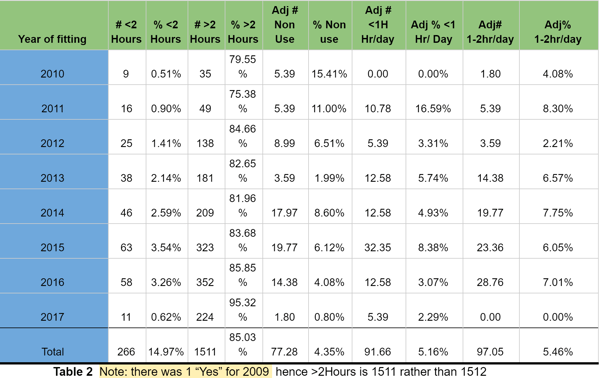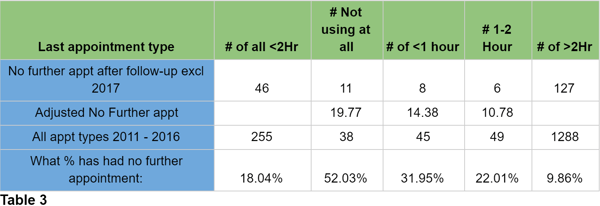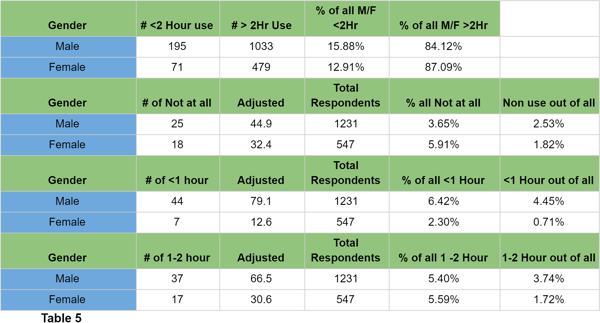Time To Read: 30 minutes
We look at the disturbing statistic that only the 1-in-3 people wear their hearing aid regularly. At Value Hearing more than 95% of our clients wear their hearing aids regularly. We look at the reasons why:
- Our survey
- Summary conclusion
- Study Hypothesis
- Study Design
- Study Results
- Additional questions
- Conclusion
No matter how cheaply you can purchase a hearing aid, they are still a significant investment in yourself, costing thousands of dollars for a good quality set. Not only are they an investment in financial terms, but also in your health as new research suggests they might be able to cut your risk of dementia caused by untreated hearing loss: See full article here.
Untreated hearing loss is well known to have other side effects such as increased stress, fatigue, higher rates of depression and anxiety as well as social isolation and frustration. So getting help that will last well into the future is vital.
You would hope that all hearing aids and hearing clinics are pretty much the same…
It has however been reported that up to 1 in 3 people Australia wide who get hearing aids end up not using them! (* SMH ). That is like buying a car and leaving it in the garage to rot. Not something you’d like to do I am sure and certainly not a strong reason to get hearing aids in the first place. What further complicates things is, that this disuse can happen after a year or two of first getting the hearing aid. So no matter how long the trial period, you aren’t necessarily guaranteed long term success.
In March this year The Sydney Morning Herald wrote: “Adjunct Professor Anthony Hogan, a hearing loss researcher at Australian National University, says one in three people with hearing aids are not using them.” in their article titled: ”ACCC puts hearing aid industry on notice for 'inappropriate' sales behaviour” *SMH
We were unfortunately unable to find the study Adj Prof Hogan was referring to. Further search showed that the EARtrak SUBMISSION: PRODUCTIVITY COMMISSION LONG-TERM CARE AND SUPPORT SCHEME ENQUIRY references an Article published by Dr Harvey Dillon (2006), a leading hearing researcher, which shows that 21% of people fitted under the government system do not wear their hearing aids at all(1*). A more recent Australian Study conducted in 2010, showed an Australian hearing aid owner, non-use rate of 24% (2*)
Our survey
These statements and figures are concerning if one considers the financial and health implications. We as clinicians have to take responsibility for our client outcomes.
So we set out to do a study to see how Value Hearing with its innovative processes stack up against these less than stellar numbers.
After surveying 3,721 clients (1,778 responded) we found that only about 1 in 23 of our clients (4.36%) do not use their hearing aids at all. This means that Value Hearing’s carefully crafted and innovative processes makes you up to 7.59 times (759%) LESS likely to end up not using your hearing aid, compared to the industry at large. To look at another way, Value Hearing's Clients are up to 43% more likely to use their hearing aids over the long term, compared to the industry average.
Our Unique processes start with the first assessment and our unique hearing aid selection process. This is further complimented by our fitting and follow-up processes and rounded out by our active recall processes.
We are still not entirely satisfied by this number. We have used the data and combined it with our clinic database and have identified other factors that may potentially cut this figure in half again to around 1 in 45.
We are also taking steps to get our non-users back in for appointments to see if we can assist them further. All the data and full conclusion follows. Click here to go straight to the detailed conclusions.
Value Hearing has continually innovated with our unique Assessment, hearing aid selection, follow-up processes and active recall systems, with a core focus on achieving the best long term client outcomes. As a result our hypothesis is that we should be doing significantly better than the 21% to 33% (1 in 3) hearing aid owners who do not use their hearing aids as quoted in research and media. *SMH 2* 3*
We created a very simple one question survey which was sent via email to 3,721 of our clients that have email and valid last fitting dates. We chose email as it would give us the quickest answer and it also corresponds with the medium the majority of our clients prefer. Our email software can also accurately track who selected which option through a tagging system, making it easy and accurate when tallying responses. This also allows us to void any respondents who chose more than one option.
Prior to 2011 we were using a paper based system and not all records from this period were captured on our new computer based system.
We chose a period long enough to include a range of hearing aid technologies and to see if the improvements we have made in our processes over time have had any positive impact on non-use rates.
The Question that was asked:
Do you wear your hearing aid(s) two (2) hours or more per day on average?
We chose two hours as previous research suggested people overestimate their usage by around two hours, so we wanted a clear separation of those who use vs those that do not use hearing aids consistently.
This is what the email looked like: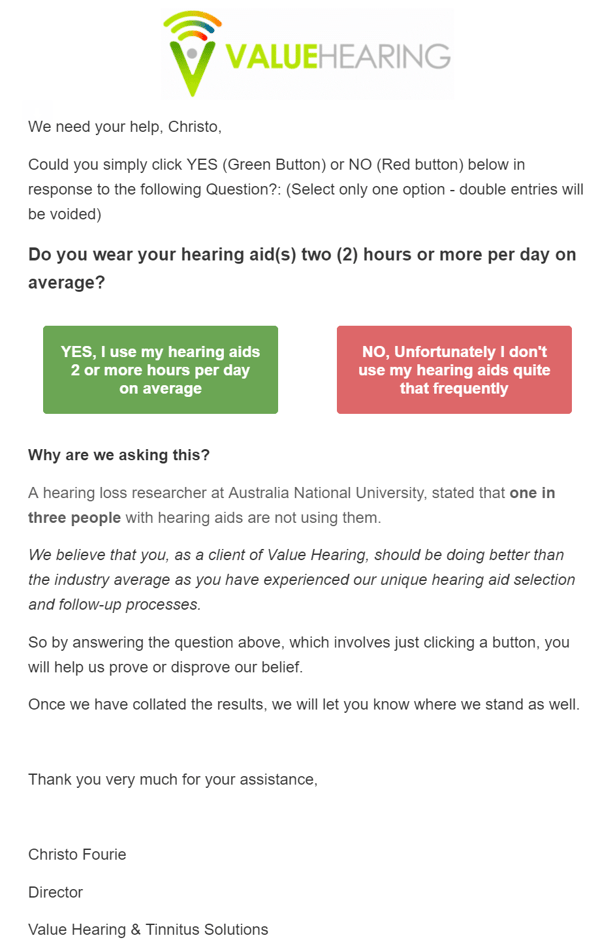
Once a client clicked on a response, their answer was tagged in our email marketing system and they were taken to our website where a thank you message appeared. Those who responded “NO, Unfortunately I don't use my hearing aids quite that frequently” (“No”) were then given the option of explaining why they weren’t using their hearing aids as much. Those that responded “Yes, I use my hearing aids 2 or more Hours per day “ (“Yes”) did not receive the opportunity to comment.
We followed up those who selected “No” with a second email asking for more clarification on more exact usage patterns. This email was sent weeks later after there were no more responses from the initial survey for a week (This occurred around 6 weeks later)
This is what the second email looked like: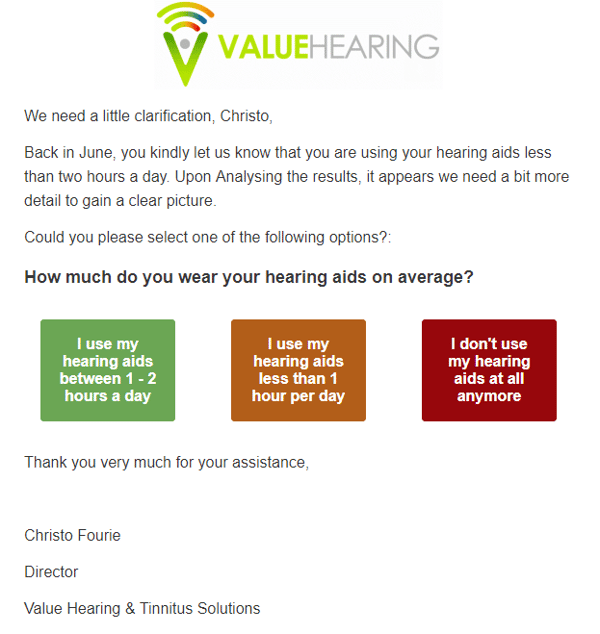
Study Results:
Results from first email:
- Out of the 3721 clients emailed, 1778 responded to the survey giving us a 47.78% response rate, which is considered good.
- Of the 1778 respondents 85% (1512) responded that they were indeed using their hearing aids more than 2 Hours per day on average (“Yes”)
- 14.9% (266) responded that they were using their hearing aids less than 2 hours a day (“No”).
- Of the 14.9% who responded that they were using their hearing aids less than 2 Hours a day, 52 (19.5%) commented on their reasons for not wearing their hearing aids that much.
- Of the 52 that commented, 36% (19) reported that they still wear their hearing aids regularly, but choose not to wear them all the time for a variety of reasons, mainly revolving around only using them when they feel they need them.
Of those commenting n = 52, the main reasons for not using the aids much revolved around the following:
- 6 (11.5%) reported background noise as the main reason for not wearing their hearing aids at all or not as much as they should.
- 6 (11.5%) reported that the aid was broken and they had not sought help
- 9 (17.3%) reported that the aids didn’t seem helpful
- 12 ( 23.1%) reported that the aids were uncomfortable.
These findings are consistent with previous research
Follow-up Email results
The follow-up email to the less than 2 hours use per day - the “No” group, delivered a response rate of 55.64% with 148 of the 266 people responding.
The response group was broken down as follows:
- 54 (36.5%) responded that they use their hearing aids between 1-2 hours a day
- 51 (34.5%) responded that they do use their hearing aids regularly, but for less than an hour a day on average.
- 43 (29%) responded that they do not use their hearing aids at all.
If these figures are extrapolated by dividing the number of responses by the response rate (55.64%) for the less than 2 Hours use category (“No” Group”) (n=266) then:
- 97.4 (5.48% of all respondents) out of the original 266 would use their aids 1-2 hours per day
- 92 (5.17% of all respondents) would use their aids, for some time, but less than 1 hour per day
- 77.6 (4.36% of all respondents) would not use their aids at all.
Out of the 1778 total respondents that would mean only 4.36% of our clients aren’t using their aids at all over the entire period surveyed.
This is significantly better than the industry average which is reported to be 21% to 33% for non use.
A few respondents to the follow-up email came back with replies like these which we also found very insightful:
“The questions were too restrictive.
When I am home alone, I don’t use my Hearing Aids. When I go out to a Lunch, Dinner, Movie or any social event, I wear my hearing aids all the time. However, your questions doesn’t give me the option to record my usage.
- Do I use my hearing aids every day. A. No
- When you do wear your Hearing Aids, what’s the average hours per day? A. 6 hours
I hope this helps to clarify my response.”
“I use my hearing aids when I am at a concert or play or in a social situation with a number of people for example lunch , party, art class, seniors club meetings. Therefore I wear them 2 or 3 times per week a few hours at a time. I find them very helpful in these situations.”
“Thank you for following up on my hearing aid usage, which varies considerably.
To explain further, I live alone so I don’t wear them at home. I wear the aids when teaching on campus and for meetings. So, during the semester period, I wear them up to 8 hours/day for 4 days of the week, when they are very helpful. During semester breaks, though, I rarely use them”
“Hi - well, strangely enough, I have started using my hearing aids a lot more - so it would be more than 2 hours per day but not for the whole day.”
“Hi Christo thanks for your email. I do not wear my aids every day. I try to use them at meetings,church and in the car. Hope u r well. cheers “
“I wear my hearing aids when I need to. Regular usage of 2 hours a week was guessed at using:
- Tuesday nights at trivia 4-5 hours
- Wednesdays 10-12 hours all day with my granddaughters
In addition:
- On weekends away with friends – 16 hours a day
- Any other time I’m with people
- Movies/videos at home - irregular. TV - minimal to non-existent.
At home, unless I’m doing something that demands their use, I don’t wear them. Even when working, I have headphones for conferences and they have no great value for phone calls.
Basically, I have no idea because averaging this doesn’t make any sense to me.
At the risk of “mentioning the war” (as John Cleese would say), this information could have been obtained by hooking my hearing aids up to the computer last time I went for a check.
It’s something I will get from future visits if only so that I know.
Sorry this information probably is useless to you, but I’ll leave you to tick the appropriate category that you believe I fit into.”
“Just wanted to inform you the reason I am not wearing them is due to the fact that when I shifted back to Victoria I have misplaced them. I am slowly going through boxes trying to find them”
“I use wear 2 hearing aids for long time and now wear 1 hearing aid cos other ear got
Tinnitus make me unbalance n feel sick.
Sadly hard to understand on 1 ear”
“ Every week I wear them to work which is every week end. So about 20 hours. I then use them for social situations, which is not all that often. Hope this is useful. “
“I don't use them at work through the week but use them all weekend”
“Just to clarify my hearing aid use. I live alone, and am not really a TV fan, I mainly read. I guess I just forget to use it, as when at home I like it quiet. I mind my grandchildren & also pick one up from school, so I will endeavour to remember to put it on prior to seeing them - as this is when I need it.
I am very happy with it, it is just a case of me remembering. I will set a reminder on my mobile to get me into the habit again!
I wore it momentarily into the shower when I was away, and I think that gave me a fright, thinking I had damaged it, but it was fine. I was afraid of the expense of it all wasted if I wrecked it.
Thank you for your enquiry, I will let you know how I go.”
Next we explored in a bit more detail to see which factors may affect usage and non-usage rates:
NOTE: All figures for Non-Use, Less than 1 Hour use and 1-2 hour use were adjusted back to the 266 respondents by dividing their values by the response rate to the second email (55.64%)
Average and Median age
Latest fitting date of negative (less than 2 hours a day) responders n = 266 vs positive responders (more than 2 Hours a day) n = 1511
Last appointment type:
2017 was excluded as many clients would still be in their follow-up stage at the time of the survey and as we only recall at 6 months, they would not have received their automated recalls yet.
Number of ears fitted:
We included BiCROS fittings under two ears fitted Both ears fitted
Gender:
The results are very interesting and shows that non-usage rates of as low as 4.36% are indeed achievable with careful in clinic hearing aid selection and follow-up process planning.
.
Age as shown in table 1 does not appear to be a factor in our client demographic between use and non-use in hearing aid owners.
Year of Fitting (Table 2) does seem to have a significant impact. Clients Fitted in 2010 have a Non-use rate of 15.41% vs 4.08% in 2016. Interestingly clients fitted in 2013 has a non-use rate of only 1.99%, spiking back to 8.60% in 2014, after which it steadily decreases. In 2014 we started growing our clinic numbers again, so lack of formal processes and clinician inexperience with our processes may have triggered this increase. Since 2014 have become much more process driven and at the end of 2014 installed an automated recall system.
Since 2014, the number of non-use clients have dropped by more than 25% per year. This may show that as our processes have improved, our non-use rate has dropped. Hearing Aid technology has also improved over time and each generation anecdotally seems better. So this might be another factor playing a role here. It is also interesting that the number of respondents wearing their hearing aids 1-2 hours a day has been increasing, while non-use and less than 1 hour use has been decreasing with increasing fitting year since 2014.
Last Appointment Type (Table 3) - The data shows that 52.03% of respondents who are non-users have not responded to our recalls past their recommended follow-up appointments. Less than 1 hour use shows 31.95% have not had any appointments past follow-up, while 1-2 Hours use shows 22%. The lowest percentage of respondents that have not responded to recalls is in the group that uses their hearing aids more than 2 hours per day. This may suggest that clients should be urged to make use of their recalls to ensure long term usage. It also shows the importance of recalls for long term client benefit.
Number of ears fitted (Table 4) - Some people have the choice of having hearing aids in one ear or both. Recently systems such as wireless CROS and BiCROS have opened fitting in two ears for people who would previously only have benefitted from an aid in one ear. The data revealed that a larger percentage of people using two hearing aids (including CROS) wears their hearing aids more that 2 hours a day compared to those fitted with one hearing aid only. It also shows that your likelihood of being a non-user is more than twice that of wearing two hearing aids (or a CROS). So Fitting in two ears including the consideration of BiCROS or CROS options should be a priority where possible to ensure long term use.
Gender (Table 5) - The data suggests that gender differences do exist. A greater percentage of females appear to use their hearing aids for more than 2 hours a day than males. On the flip side, females seem have a higher non-use rate at 5.91% compared to males (3.65%). So it appears that our male clients are less likely to stop using their hearing aids, but females either wear their hearing aids more than an hour a day or not at all. We need to study the return for credit rate difference between these two groups to see if females are less likely to reject a hearing aid during the 60 day trial period.
Other Potential Factors not taken into account:
We will be analysing the results further to look at factors such as brand choice, severity of hearing loss, hearing aid style, previous hearing aid experience and even clinician factors in an attempt to further improve our clients’ non-use rate. This data is already contained within our client database, but it was outside the scope of this study. We will be exploring these further in an attempt to reduce our non-use rates further.
Conclusion:
The reported average hearing aid owners’ Non-use rate of 1 in 3 is completely unacceptable considering the financial and health impacts this has on the non-user. We have shown that a non-use rate of as low as 4.36% or around 1 in 23 (a greater than seven times improvement) is attainable through careful consideration and design of the client journey. One could safely assume that better usage rates are related to better hearing aid benefit from hearing aids as research by McCormack and Fortnum (2013) 3* shows that factors leading to non-use were mainly related to how much benefit the aid provided as well as comfort.
Our Client Journey starts with a unique hearing aid assessment and selection process, which we believe plays a major role in these far better than average long term outcomes. This is supported by our fitting, follow-up and automatic active recall processes. As previous studies have collected data from a range of clinics and shown averages, the non-use rates could be much higher or lower depending on which clinic the client ends up choosing to go with.
It is safe to say that the choice of hearing clinic is THE single most important factor in whether the hearing solution you choose is still going to benefit you in the years ahead, irrespective of the price you pay. It is important you ask for clinic specific non-use data when choosing a hearing clinic.
Other important factors that may contribute to low non-use rates relate to active automatic regular recalls of clients. It should not be left to the client to contact us if they need us as life gets in the way. 52% of clients who do not use their hearing aids, have not made use of our recalls. Considering many noted faulty hearing aids or comfort issues as reasons for non-use, one could assume that many of these issue may have been addressed with clinical intervention.
We will be making sure that our clients are encouraged to report any issue no matter how small. We will further improve our recall system by making staff aware, so they can communicate this to clients at every interaction in clinic.
Where possible you need to wear two hearing aids or at least a BiCROS system as this improves your chances of long term usage by around twice that of only using one hearing aid.
All clients could benefit from their spouses being present during the initial consultations to improve long term outcomes. Female clients may benefit even from more active support from their partners during the journey.
We will be recalling all the clients who market themselves as non-users to see if we can improve their hearing aid satisfaction. Further we will be exploring other factors that may influence usage such as hearing loss level, Speech in noise scores, hearing aid style and brand as well as clinician influence to further improve your long term satisfaction.
The relation between client journey, careful hearing aid selection, fitting and follow-up as well as the need for active automated recalls, do not vouch well at all for online or over-the counter bought hearing aids.
References:
*SMH http://www.smh.com.au/business/consumer-affairs/accc-puts-hearing-aid-industry-on-notice-for-inappropriate-sales-behaviour-20170301-guoo2e.html (2nd Last Paragraph)
1* http://www.aph.gov.au/~/media/wopapub/...../submissions/sub36_pdf.ashx
2* Hartley D., Rochtchina E., Newall P., Golding M., Mitchell P. Use of hearing aids and assistive listening devices in an older Australian population. J Am Acad Audiol. 2010;21:642–653. [PubMed]
3* McCormack A. & Fortnum H.. Why do people fitted with hearing aids not wear them? Int J Audiol. 2014 May; 52(5): 360-368

